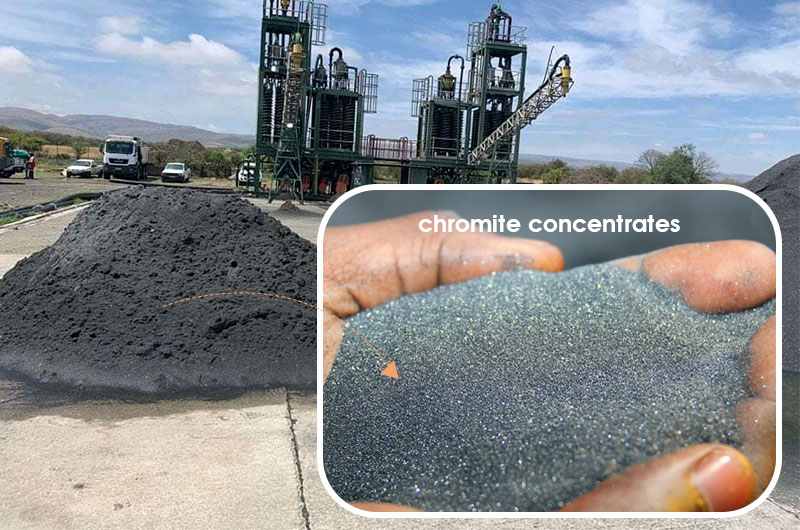Top 3 Chrome Ore Processing Methods that Get Higher Recovery Rate
We have learned that chromite ore (people often call it chrome ore) is Crusherand its wide application in metallurgy, refractory and chemical industries.
Heres the big question, how to purify chrome from its ore?
Today we will focus on the first step in the chrome ore processing plant: making chrome concentrate through chrome beneficiation.

Chrome ore properties
Among more than fifty kinds of chrome minerals found in nature, chromite is the sole commercial source.
The chromite ore is concentrated in South Africa, Zimbabwe, Kazakhstan, Russia, Finland, India. South Africa is the major chromite ore supplier.
Chromite is weekly magnetic. Its density ranges in 4.1~4.7g/cm3, its Mohs hardness fluctuates within 5.5~6.5, and its color differs from black to dark brown.
Its major gangue minerals are talc, olivine, serpentine, and pyroxene.
Chromite is insoluble in weak acids such as acetic acid, and boric acid, nor is it soluble in 1:1 HCl, 1:1 HNO3, 1:1 H2SO4, aqua regia and HF acid. But it dissolves in 1:1 phosphorus and sulfur mixed acid.
When calcined at low temperature, the dehydration of chromite turns from dark brown to blue-black. At high temperatures, chromite reacts with soda ash or sodium peroxide to convert Cr3 + into Cr6 +.
Understanding the mineral properties of chromite is the prerequisite for beneficiation.
The important beneficiation process in the chrome processing plant mainly include comminution and concentration.
1. Comminution
Chrome lump ore, or chrome stone, must be crushed and ground into powder due to medium and fine dissemination grain sizes to liberate more chrome mineral.
While chromite sand ore does not need the two steps. For example, most of the chromite mines in the Philippines and Vietnam are chromite sand. After desliming by washing, the grade of chromite sand will rise greatly, and it will be further improved by jigs and shaking tables.
2. Concentration
The predominant method to concentrate chromite stone is gravity separation. However, given the slightly different chromite properties around the world, magnetic separation, flotation, chemical beneficiation, and combined beneficiation methods can also be used flexibly.
Chrome ore gravity separation
The specific gravity of chromite ore is 4.1~4.7g/cm3, while that figure of associated gangue and iron silicate minerals is generally 2.7~3.2g/cm3. Therefore, we can utilize
Among the chrome beneficiation machines, jigs are for chromite rocks with medium and fine grain sizes, and shaking tables are for fine chromite ore. The combination of jigs and shaking tables is more prevalent in the chromite gravity separation plants for the best recovery effect.
Two problems should be paid attention to when treating low-grade chromite by gravity separation:
(1) The chrome lump ore is friable and will produce a large amount of fine-grained chromite ore that is difficult to recover by gravity separation. So, flotation equipment is required.
(2) Due to the huge difference in the grain size of chromite rocks, we will use multi gravity separators, i.e. different combinations of jigs, shaking tables, spiral chutes to form a complex chrome processing flowsheet for a better recovery result.
Crusher
Crusher

